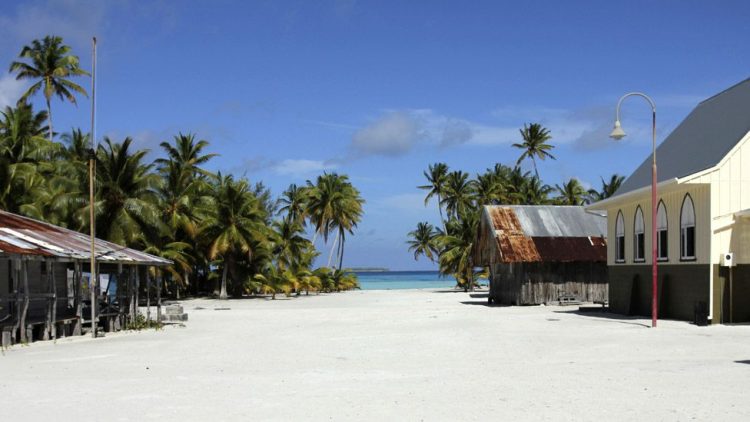The geographically far-flung Palmerston Island atoll was first sighted by Captain James Cook and his crew in 1774. The intrepid Yorkshire-born mariner gave it a wide berth on this first encounter but chose in any case (either cannily or obsequiously) to name it after Lord Palmerston.
Returning three years later, and on his third voyage to these South Pacific parts, Cook and co. did indeed venture ashore seeking food and supplies. Thus, making Palmerston the only single island in the coral reef-bound Cook Islands to be graced by a visit of the great man himself.
The island was then uninhabited but in earlier times it had experienced brief periods of native occupation and was already known to the Polynesians as Ava Rau – which translates as something like the Place of 200 Channels. But one name really dominates Palmerston, that of William Marsters.
At the last, all but three of the present residents of the island are direct descendants of Marsters. To call Palmerston a close-knit community is an understatement, to say the least. It is also an exceedingly small one: The population stands at just over sixty families, down from about 300 in the 1950s and 1960s.
William Marsters, however, did get the place off to a running start by fathering twenty-three children with his three Maori wives. Hailing from Gloucestershire (or by some accounts Leicester), this English carpenter and cooper had wound up on Manuae Atoll, near Aitutaki after sailing across the Pacific from California. Where he’d headed in search of gold in the rush of the 1840s.
Clearly a man given to taking a punt on a hunch, he accepted the position of caretaker of the island and sailed the 228 miles to it in 1863 with his first two wives. The third was acquired a short while later, and maybe even a fourth, too.
Once on Palmerston, he procreated, hunted the bosun bird, fished for parrotfish (still a prized local delicacy and the island’s chief export) and planted palm trees to produce coconut oil and gathered sea cucumbers from the lagoon. The house he built from the timber of shipwrecks still stands today.
And it was the only structure on the island to escape an appalling hurricane that swept everything else away in 1926. After a long tussle with the British government, William Marsters was eventually granted possession of the island by Queen Victoria in 1892 but died of malnutrition only seven years later after his coconut trees died of blight.
Technically administered by New Zealand, Palmerston has its own government and Marsters’ descendants were granted full ownership of the island in 1954. Only their relatives can reside on the island. What they have, certainly aesthetically, is as close to a Pacific island paradise as you can get – hurricanes aside.
Accessible only by boat and by a treacherous approach, this is a place of white sandy beaches, verdant palm trees and pandanus (a palm-like tree) and an abundance of coconut, taro, and breadfruit, all surrounded by a clear sea and a lagoon so plentiful with seafood that it serves as a kind of offshore kitchen, to be raided as the appetite demands.
That said, the numbers of parrotfish have dwindled so much in the last twenty years that intermittent bans have had to be imposed to help numbers recover. The islanders take pride in the peace of their surroundings and the gentility and order of their society.
Marsters was seemingly quite a severe and devout individual who schooled his offspring in Christian worship. The church continues to be the center of island life, and barter and exchange remain the main form of custom between islanders themselves. However, such a simple life over there, as no shops, no hotels, and no restaurants available. Most of the families are engaged with fishing occupation and collect rainwater for drinking water.
Drinking water is chiefly derived from rainwater and plumbing is primitive to non-existent: there are two toilets on the island. Their main freighter supply ship visits just twice a year, also bringing with it rice and similar staples to be traded for frozen parrotfish and other islands produce.
Slightly less isolated from the modern outside than it once was, Palmerston is on the internet. And electricity, previously rationed, is now available twenty-four hours a day, thanks to the installation of new solar panels in 2015. Home to the highest number of deep freezers per capita in the entire world.
The Palmerston Island especially welcomed this innovation, its people fed up with losing the contents of their freezers whenever the power failed. PIA (Palmerston Island Administration) and Cook Islands government take care of the administrative matters.
Moreover, fishing, tourism, copra, and bird feathers are the main economies. The basic and modern facilities are available on the island, like electricity, telephones stations, and cargo ships, but no airport. The island is full of coconut palms, pandanus, and native areas. The tropical climate, suits shellfish, parrotfish, and many other sea creatures. Read More – The Kabayan Mummies Caves – Benguet Philippines
Product You May Interested
- Crush Food Cravings with Odd Water Hack and Melt 62lbs
- Flavor Pairing Ritual Supercharges Women’s Metabolisms
- The best Keto Diet Program
- Unlock your Hip Flexors, Gives you More Strength, Better Health and All-Day Energy.
- 21 Days Flat Belly Rapid Weight Loss System
- Fan Victor – The Ultimate Fantasy Sports Plug-in
- 7 Instant Confidence Technique with Women Program

